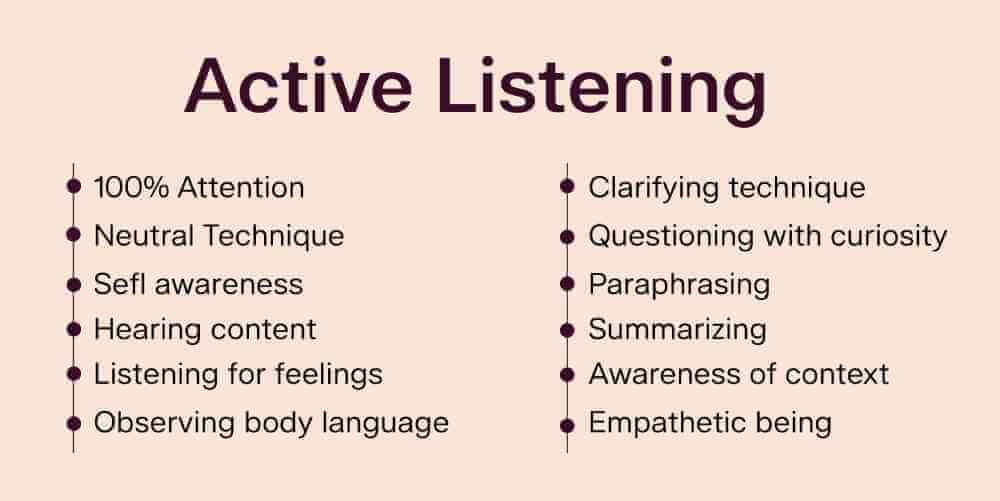
Cold Calling Tactics that the Top 1% Use to Close Deals
As you dial the first number on your cold call prospect list, you can't help but feel a rush of anticipation. Will this call lead to a breakthrough sale?
Though cold calling has long been a cornerstone of sales strategies, success requires more than just a smile and a script. It demands precision, strategy, and a deep understanding of human behavior.
According to research, only under 2% of cold calls result in a meeting, let alone a closed deal. So, what sets apart the top 1% of cold callers who consistently defy the odds and close deals with finesse?
To learn more about this, you need to read our blog.
We'll discuss next-level cold-calling tactics, from personalized approaches to leveraging advanced technology. We'll explore the innovative strategies that separate the best from the rest.
Secret Strategies to Get Response Through Cold Calls
Here is a detailed breakdown of methods that can transform your cold-calling outreach into a deal-closing machine:
1. Use Strategic Listening and Questioning Techniques
You must already know that active listening is a method of seizing the deal during cold calls. It involves 12 prime skills like:

Yet, you can significantly boost your chances of getting a positive prospect response by pairing these skills with advanced techniques. So, let's check out such techniques you can use:
-
Catch the Non-Verbal Cues
Active listening to your prospects during cold calls also involves being attuned to their non-verbal cues, such as:
- The Tone of Voice: Pay attention to the prospect's tone, pitch, and pace. A lively, enthusiastic tone suggests engagement and openness. However, a monotone or hesitant delivery may indicate uncertainty or lack of interest.
- Pauses and Silence: Silence can speak volumes during a conversation. Notice any pauses or moments of silence and consider their significance. They could indicate contemplation, hesitation, or information processing.
- Mirroring: Mirroring is when the prospect subconsciously mimics your speech patterns. It can signify rapport and connection, indicating that the prospect is engaged and receptive to your message.
- Distracted Behavior: Be alert for signs of distraction or multitasking, such as typing on a keyboard, rustling papers, or background noise. These behaviors may indicate that the prospect is not entirely focused on the conversation or is preoccupied with other tasks.
You can pick up on such cues by giving your prospect undivided attention. These gestures reveal their feelings, concerns, and priorities more than words alone. This way, you show genuine interest and respect by actively observing the prospects' behavior.
-
Formulate Open-Ended Questions
The easiest way to learn about your prospects' expectations and beyond surface-level information is to let them express their thoughts. You can do so with the open-ended questions, such as:
- "Can you tell me more about your current challenges or pain points in [specific area relevant to your product/service]?"
- It encourages prospects to provide detailed information without limiting their response to a simple yes or no answer. Thus, it allows you to gain deeper insights into their needs. - "How do you envision [desired outcome or solution] fitting into your overall business strategy?"
-It encourages prospects to express their thoughts and aspirations, providing valuable context for tailoring your approach. - "What are your thoughts on [industry trend or recent development], and how might it impact your business moving forward?"
-It encourages prospects to share their perspectives on business needs and priorities relevant to industry trends or developments.
-
Probe Deeper to Uncover Prospect Needs and Pain Points
After an initial response, don't hesitate to ask follow-up questions that delve into the underlying issues and motivations. These may look like:
- Can you tell me more about the specific challenges or obstacles you face in your current situation?
- How have these challenges impacted your day-to-day operations or overall goals?
- What strategies or solutions have you tried to address these challenges, and how successful were they?
- How do you envision overcoming these obstacles or improving your current situation?
- What are the primary goals or outcomes you hope to achieve by addressing these challenges?
- Are there any particular pain points or frustrations that stand out to you as priorities to address?
- How would you describe the ideal solution or outcome for your situation?
- Can you elaborate on specific experiences or instances highlighting the need for a solution to these challenges?
- What resources or support would be most beneficial in addressing these challenges effectively?
- Have you identified any potential risks or concerns associated with implementing a solution to these challenges?
It indeed shows your dedication to learning about their challenges and aspirations.
Beyond understanding the practical aspects of your prospect's challenges, strive to empathize with their emotional experience.
Put yourself in their shoes and seek to comprehend the emotional drivers behind their concerns. This deeper level of understanding can strengthen your connection with the prospect. Plus, it enables you to offer solutions that resonate personally.
By mastering these skills, you'll be better equipped to connect with prospects, tailor solutions, and ultimately, drive unparalleled results in your sales endeavors.
2. Employ Advanced Objection Handling Skills
Next up, let's explore more curated ways to handle the concerns and objections of your prospects. They often have these major objections while interacting in sales calls:

So, you must use the following methods:
-
Reframe Objections As Opportunities
Instead of seeing your prospects' concerns as roadblocks, view them as opportunities to understand the prospect's needs and wants. Reframing objections can steer the conversation towards a more productive discussion.
For example, if a prospect raises a concern about pricing, you could reframe it by emphasizing the value and return on investment your product or service provides.
-
Address Concerns With Empathy
Show empathy towards the prospect's concerns by actively listening and acknowledging their perspective. Instead of dismissing objections, empathize with the prospect's perspective. Then, offer alternative viewpoints or solutions that align with their needs. This approach shows that you're genuinely interested in finding a solution that works for them.
-
Negotiate Win-Win Solutions
Successful negotiation often hinges on finding common ground between your objectives and the prospects. Identify shared interests or goals that both parties can agree upon, which lays the foundation for a mutually beneficial outcome.
For instance, if you and the prospect value long-term relationships, emphasize how your solution fosters partnership and collaboration.
-
Maintain a Collaborative Approach
Negotiation is not about winning at the other party's expense but rather about finding solutions that satisfy both parties. Adopt a collaborative approach to explore creative solutions together. This cooperative mindset fosters trust and increases the likelihood of reaching a mutually satisfactory agreement.
-
Maintain Composure and Professionalism
During objections and negotiations, you must remember what and how you talk. Show professionalism by taking your prospect's concerns seriously. Be committed to finding a solution that meets their needs. This will enhance your credibility as a trustworthy partner.
-
Stay Confident
Objections and negotiations can sometimes become tense or challenging. Staying confident in such situations can help you maintain control of the conversation and steer it towards a positive outcome. Practice techniques such as deep breathing or positive self-talk to manage stress and maintain confidence.
Your demeanor can influence the prospect's perception of your capabilities and ultimately impact the success of the negotiation.
3. Build Long-Term Relationships and Establish Trust
Once your prospect responds to your cold calls, solidify the relationship with them. Here’s how:
-
Lend Authentic Conversations
Take the opportunity to make a positive first impression. Begin by introducing yourself and your company concisely and professionally.
Instead of focusing solely on the sales pitch, engage in authentic conversations with prospects. Show genuine interest in learning about their business journey. Maintain a give-and-take of meaningful dialogue.
Focus on providing value during the call by highlighting how your product or service can address the prospect's pain points. Share relevant success stories or case studies to demonstrate credibility and show that you understand their industry or challenges.
- Demonstrate Expertise And Reliability
Transparency and honesty are essential for building trust with prospects. Keep sharing how your service works and your track record of delivering results for clients. Providing concrete examples of how your clients happily rely on your product reinforces your reliability.
- Nurture Relationships for Long-term Opportunities
Stay in regular contact with prospects through personalized follow-up emails, phone calls, or meetings. You can position yourself as a trusted advisor by demonstrating continued interest and providing ongoing support. It increases the likelihood of future business opportunities and referrals.
- Offer Ongoing Support and Value
After the initial sale, continue to provide value to prospects by offering ongoing support and assistance. It could involve:
-
- Providing additional resources
- Offering product demonstrations
- Training sessions
- Sharing industry insights and updates
Demonstrating your commitment to their success and providing ongoing value can strengthen the relationship and increase customer loyalty.
Regular follow-up and communication with prospects can maintain relationships and keep them at the top of their minds. Schedule periodic check-ins to see how they're doing and if there are any new challenges or opportunities you can assist with. You can nurture relationships and position yourself for future business opportunities and referrals by staying engaged and demonstrating your ongoing support.
4. Leverage Technology and Data Insights
Streamlining data gathered through cold calls can help you stand out more than others. Use the needed tools to manage and maintain such invaluable insights:
-
Employ CRM systems and Sales Enablement Tools
Streamline prospecting by organizing customer data, tracking interactions, and automating repetitive tasks. Use CRM systems to:
-
- Manage leads
- Track communication history
- Prioritize follow-up activities
Further, with sales enablement tools, you can access:
-
- Content libraries
- Sales collateral
- Training resources
These empower reps to deliver more effective presentations and proposals.
-
Use Data Analytics
Analyze vast customer data to identify patterns, trends, and insights. By leveraging data analytics, your sales reps can identify high-potential leads based on:
- Demographic information
- Past purchasing behavior
- Engagement history
- Trends, patterns, and correlations within their sales data
- Conversion rates
- Sales cycle length
It allows them to prioritize their efforts and focus on prospects with the highest likelihood of conversion. Personalized outreach efforts tailored to each prospect's specific needs and preferences are more likely to resonate and drive engagement.
By leveraging data-driven insights, you can craft targeted messages that address each prospect's unique pain points and interests.
Conclusion
Throughout our exploration, we've seen how effective communication, empathy, and a deep understanding of prospect psychology can significantly impact cold call success rates. From personalized approaches to leveraging technology, these strategies empower you to connect with prospects meaningfully.
Thus, ultimately, you can drive conversions and revenue.
So, we invite you to join Revnew in exploring cutting-edge sales techniques. Together, we can navigate today's competitive business scenarios and get remarkable results with our B2B outbound tactics. Contact us here.




